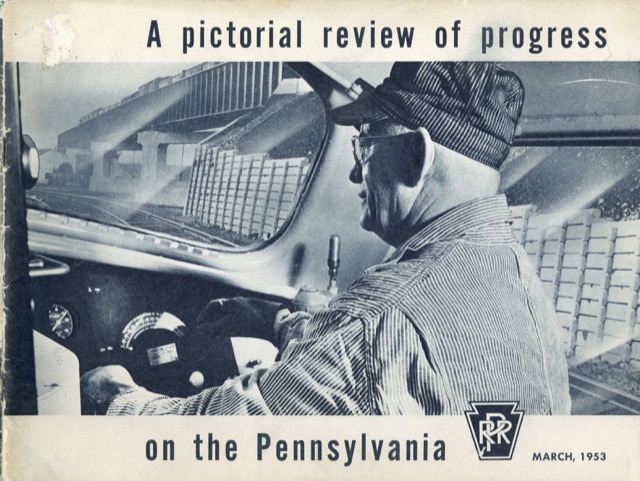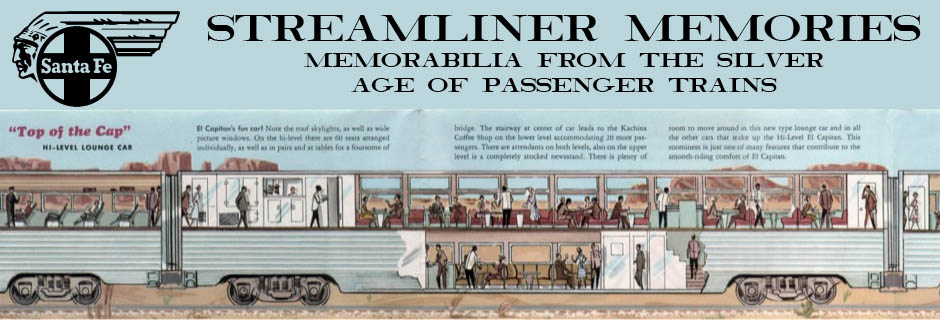This 1953 booklet is mainly about freight for shippers, but it includes a photos of passenger trains and stations. The Pennsylvania (no need to add the word “railroad” in those days) was still riding high after the war, so it is somewhat disconcerting to realize that the beautiful New York Penn Station featured on page 17 would be demolished in a decade and the railroad itself only had 17 years to live (though it might have survived if the merger with the New York Central had not put it in the hands of incompetent managers).

Click image to download a 16.9-MB PDF of this 24-page booklet.
A hint at one of the things wrong with many railroads in the 1950s is given in the proud statement on page 4 that “We now have in service 316 passenger and freight road diesel-electric locomotives, in addition to 1,032 diesel switching locomotives.” Why did it take more than three switching locomotives to serve each road locomotive? The answer is that too much of the railroad’s work dealt with moving a few carloads at a time–work that was easily captured by truckers.

That’s not Penn Station in New York City on page 17. In fact, I don’t think that PSNY is in there at all.
The “Pennsylvania Station” that they are talking about is the “Pennsylvania Station at 30th Street” in Philadelphia, or 30th Street Station, as it is currently known.
00Zy99,
You are right. That’s made clear on page 16. I should have known as I visited 30th Street Station just a few weeks before writing this.
Your comment about the number of switcher vs. road locomotives and comparing that number to trucks is unfair and, frankly, shows a real ignorance of freight operations. Truckers didn’t have to drop their trailer in a city and then have other tractors move it around to three or four other terminals picking up LCL freight. Truckers weren’t running hundreds of passenger trains a day, with many of those cars requiring switching in terminal yards to make up new trains. Truckers weren’t pulling 100 trailers, with many of them not going to the same terminal. Railroads were, so they needed hump yards to classify cars and make them up into trains. All that work required switchers. Truckers are the retail end of transport while railroads are the wholesale end. What hurt the railroads was the truckers being able to deliver on a trailer right to a customer’s door faster than a railroad could. They were using great new highways that were being built with taxpayer money while they railroads had to build everything with their own funds. Containers and unit trains are what makes freight profitable, and one of the reasons is it drastically reduces the number of switchers. The traditional end cab switcher isn’t even made now and their numbers are declining yearly.
Regards, Jim